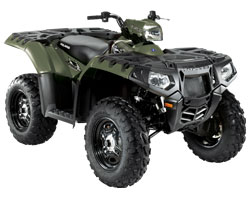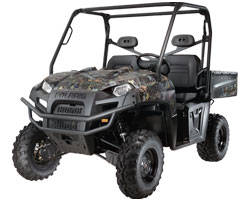Reaping the Rewards
After months of hard work, it’s finally hunting season…time to enjoy the benefits of all your labor! While the food plots you installed won’t be the only promising locations on your property, they’ll certainly be legitimate areas to see deer and harvest some that fit into your herd management plan. No doubt your scouting cameras have revealed the best food plots to get close to some does, and perhaps there is a buck or two worth your attention. Let’s take a closer look at how to hunt these special areas.

The first consideration when hunting a food plot—indeed, any stand setup—is what time of day deer are most likely to visit the area. Many larger food sources are best hunted in afternoon or evening, as deer arrive at these areas just before dark and remain there long into the night. Smaller food sources, if they’re situated near dense cover or surrounded by woods, can often be hunted in the morning. Remember, you want to avoid spooking deer off of food sources when you arrive to hunt, so if you expect deer to be near or in your food plots when you arrive for a morning outing, avoid that area and hunt somewhere else. The surest way to stop day time deer visits to a food plot is to repeatedly bump deer off it when you arrive, hunt, or leave the area.
There are two other important factors to consider when hunting in and around food plots. First, have stands and steps/ladders in place—and shooting lanes trimmed—long before your hunt. It’s also an excellent idea to cut a covert entry/exit path leading to your stand that will let you have access and leave without spooking deer. Again, your Polaris RANGER is the perfect vehicle for hauling in the equipment you’ll need to complete this work. The roomy back will hold stands and steps, saws, and safety belts to make the job easy and safe.
As the hunting season approaches, decide ahead of time on reasonable, attainable harvest goals for your season. Ideally, these goals will align with your property’s potential, your years under QDM, your available hunting time, and your years of experience. Determine the number of does that need to be taken and make a commitment to harvest them early and often. Use your trail camera surveys to get an idea of the size and availability of mature bucks on the property, then set your goals on bucks that have reached a certain age-class. Stay committed to those goals, realizing that an unpunched buck tag is no badge of shame…and can actually be a source of pride. And, finally, remember to always think “safety first” as you enjoy your property and season. Quality accessories—like our Lock & Ride ™ gun Scabbard Mount—make transporting your gear a safe and efficient task, and with a bed capacity of 1,000 pounds, your RANGER will be more than capable of hauling out your harvests. Above all, make a commitment to enjoy yourself and be satisfied with your hard efforts. Quality Deer Management is a journey, not a destination, and those who make the commitment and stick to it will enjoy deer hunting for all the right reasons.
ADVERTISEMENT
Related Vehicles
The Polaris Sportsman® 850 XP
Sportsman XP Facts:
- 850 SOHC Twin EFI Engine
- Available Electronic Power Steering
- Legendary Smooth Rolled Independent Rear Suspension (IRS)
- Superior Ergonomics
Learn More about the Sportsman XP >>
The Polaris RANGER 800 XP®
Ranger 800 XP Facts:
- New! 800 Twin EFI Engine
- Available Electric Power Steering
- Dual A-Arm Front Suspension
- Legendary Smooth Independent Rear Suspension (IRS)
Deer Management Archive
Deer Population by State
Weekly QDM Tips
Take a camera survey of your herd in the pre-season. Mount trail cameras near high-traffic deer areas such as mineral licks, food plots, or fence crossings. Record the number, sex and approximate age of every deer you “shoot”, then compare that data with your field observations come hunting season.







